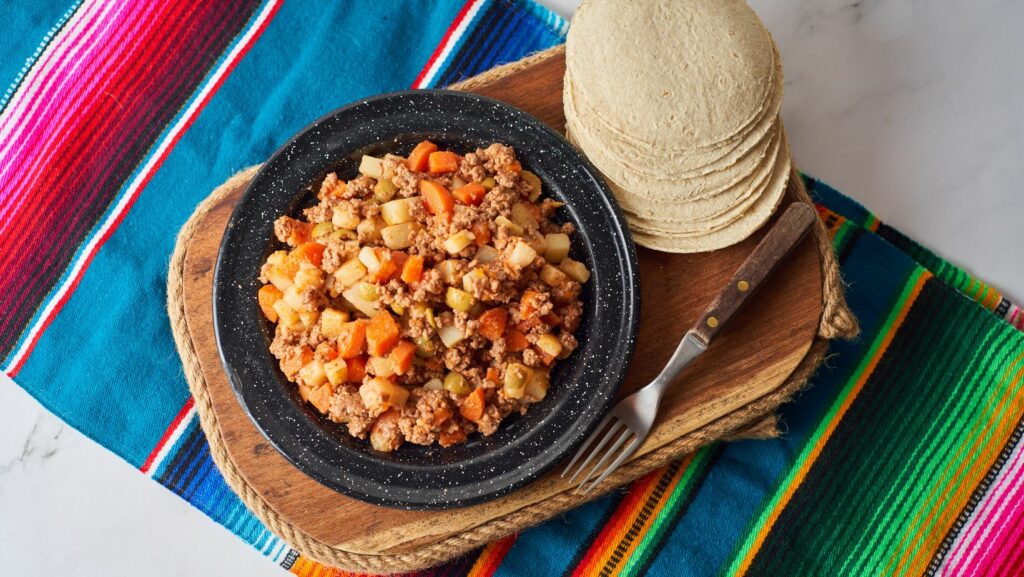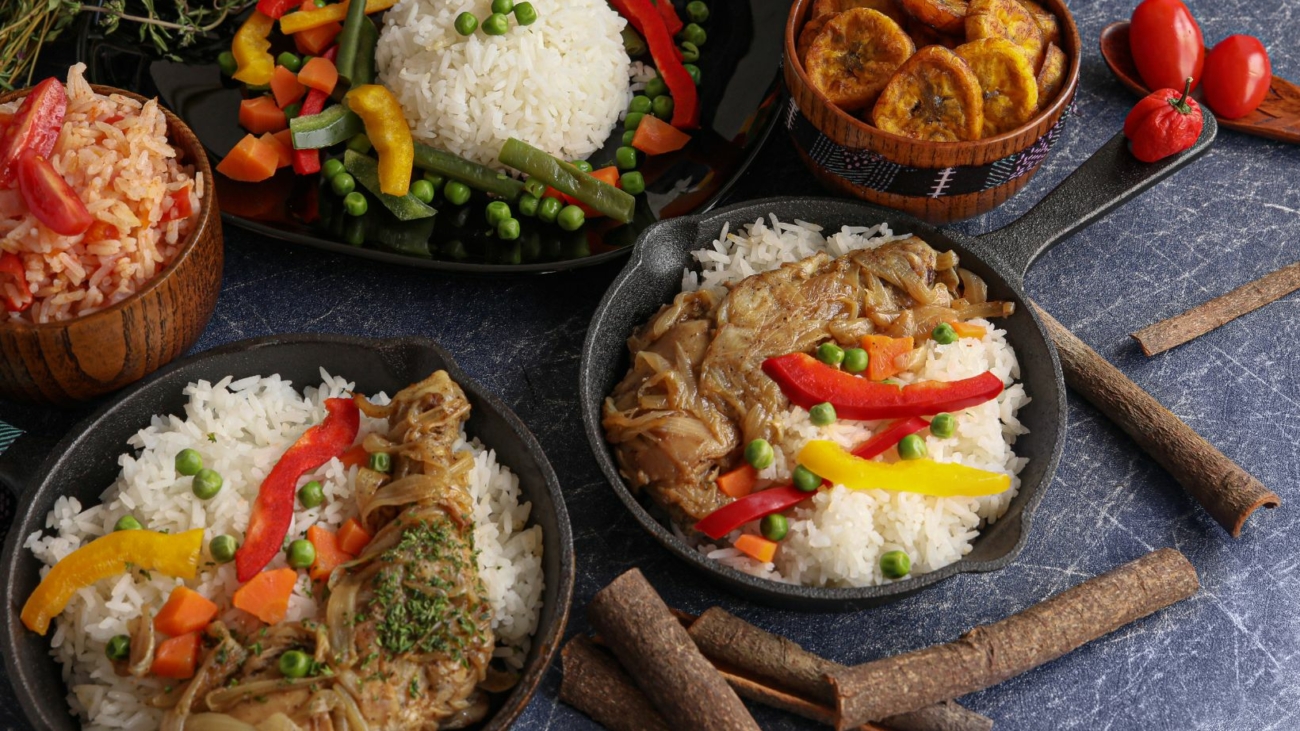Key Takeaways
- Rich Cultural Tapestry: Cuban cuisine is a unique blend of Spanish, African, and Caribbean influences, reflecting the island’s vibrant history and cultural identity.
- Key Ingredients: Staple ingredients such as rice, beans, and plantains are essential to Cuban cooking, infusing meals with depth and flavor.
- Signature Dishes: Iconic dishes like Ropa Vieja and Arroz con Pollo exemplify comfort food and communal dining, highlighting the important social aspect of meals in Cuban culture.
- Afro-Cuban Influence: The integration of Afro-Cuban flavors and cooking techniques enriches traditional dishes, showcasing the significance of African heritage in Cuban cuisine.
- Community and Celebration: Food is central to Cuban celebrations, symbolizing unity and cultural pride, with traditional dishes playing a vital role in festive gatherings and rituals.
- Evolving Cuisine: Cuban food continues to evolve, incorporating global culinary trends while maintaining its authentic roots, signifying a dynamic culinary landscape.
Cuban culture food is a vibrant tapestry woven from a rich history and diverse influences. With roots in Spanish, African, and Caribbean cuisines, it reflects the island’s unique heritage and traditions. Each dish tells a story, celebrating the flavors and ingredients that define Cuba’s culinary landscape.
From the aromatic spices of ropa vieja to the comforting warmth of congrí, Cuban food offers a delightful experience for the senses. Street vendors and family kitchens alike serve up these beloved recipes, showcasing the island’s communal spirit and love for sharing meals. For anyone looking to explore the heart of Cuba, its food is the perfect starting point.
Cuban Culture Food
Cuban culture food showcases a blend of flavors and traditions from Spanish, African, and Caribbean influences. Each dish serves as a representation of Cuba’s history and cultural identity.
Key Ingredients
- Rice: A staple in nearly every meal, presenting versatility across dishes.
- Beans: Essential for providing protein and flavor, commonly found in congrí.
- Plantains: Sliced, fried, or baked, these contribute sweetness to savory dishes.
- Meats: Pork, chicken, and beef often feature prominently in traditional meals.
Signature Dishes
- Ropa Vieja: Shredded beef stewed with tomatoes and spices, symbolizing home-cooked comfort.
- Arroz con Pollo: Chicken cooked with rice, saffron, and vegetables, a communal favorite during gatherings.
- Lechón Asado: Roast pork marinated with garlic and citrus, celebrated during holidays and special occasions.
Communal Dining Experience
Cuban meals emphasize community and sharing, often served family-style. Street vendors play a crucial role in food culture, offering quick bites like empanadas and fritas. Home kitchens thrive on this social aspect, where families gather to prepare and enjoy traditional recipes.
Global Influence
Cuban cuisine continues to evolve, incorporating global culinary trends while maintaining its distinctive heritage. Fusion dishes emerge as chefs experiment, introducing new flavors and techniques without losing the essence of Cuban traditions.
Cuban culture food represents a rich tapestry of historical influences, communal connections, and a commitment to preserving culinary heritage, making it a vibrant aspect of the island’s cultural landscape.
Key Ingredients In Cuban Cuisine
Cuban cuisine relies on a combination of staple ingredients and aromatic spices and herbs that define its distinctive flavors. These components work together to create hearty meals that resonate with cultural heritage.
Staples Of Cuban Cooking
- Rice: Rice serves as a fundamental part of most Cuban meals, commonly prepared as white rice or mixed with beans, forming a dish known as congrí.
- Beans: Black beans and red beans are popular in Cuban cooking, often accompanying rice or used in stews for added protein and flavor.
- Plantains: Plantains, whether fried (tostones) or boiled, provide a versatile side dish that complements many entrees.
- Meats: Pork, chicken, and beef are staples, with dishes like lechón asado (roast pork) showcasing Cuba’s love for savory meats.
- Vegetables: Bell peppers, onions, and garlic frequently appear in traditional recipes, adding depth and aroma to meals.
Popular Spices And Herbs
- Cumin: Cumin is a prominent spice, lending a warm, earthy flavor to various dishes, especially in marinades and sauces.
- Oregano: Oregano infuses dishes with a Mediterranean flair, commonly used in meat rubs and stews.
- Bay Leaves: Bay leaves enhance soups and braises, contributing a subtle, aromatic undertone.
- Garlic: Garlic plays an essential role in Cuban cooking, used in marinades and for flavoring rice and beans.
- Saffron: Saffron, though used sparingly, elevates the complexity of rice dishes, particularly in special occasions.
These ingredients and flavorings combine to create a cuisine that reflects Cuba’s rich history and cultural influences, making it a vibrant aspect of the island’s identity.
Traditional Cuban Dishes
Traditional Cuban dishes reflect the island’s rich cultural heritage and ingredient diversity. Below are a few signature meals that showcase the essence of Cuban cuisine.

Ropa Vieja
Ropa Vieja, meaning “old clothes,” features shredded beef simmered in a savory tomato-based sauce. This dish incorporates bell peppers, onions, garlic, and spices, resulting in a flavorful and aromatic profile. Typically served with rice and black beans, Ropa Vieja exemplifies comfort food in Cuban households. Accompanying sides often include fried plantains, adding texture and sweetness to the meal.
Arroz Con Pollo
Arroz Con Pollo, or rice with chicken, presents a harmonious blend of flavors and ingredients. Featuring chicken pieces cooked with saffron-infused rice, this dish uses vegetables like peas and bell peppers for added color and nutrition. The blend of cumin, garlic, and onions enhances its aroma and taste, making it a beloved choice at family gatherings. It’s frequently garnished with fresh herbs, offering a vibrant presentation that invites sharing amongst family and friends.
Influence Of Afro-Cuban Flavors
Afro-Cuban flavors significantly shape Cuban cuisine, blending African ingredients and culinary techniques with Spanish and indigenous influences. These flavors emerge prominently in key dishes, highlighting the African heritage embedded in Cuban food.
- Seasoning Techniques: Afro-Cuban cooks utilize seasoning techniques that enhance flavor depth. Marinating meats in spices, like garlic and citrus, infuses complexity, elevating dishes like lechón asado.
- Key Ingredients: Afro-Cuban cuisine incorporates unique ingredients that reflect African roots. Cassava, yuca, and tropical fruits appear frequently in traditional recipes, highlighting this cultural influence. Black beans also play a central role, paired often with rice.
- Cooking Methods: Techniques such as frying and slow-cooking stem from African culinary practices. These methods contribute to dishes like picadillo, where ground beef simmers slowly with spices and olives for rich flavor.
- Signature Dishes: Dishes such as moros y cristianos—a combination of black beans and rice—symbolize the fusion of cultures. This meal encapsulates the essence of Afro-Cuban cooking, where flavors and traditions interconnect.
- Cultural Celebrations: Celebrations such as San Juan de los Remedios showcase Afro-Cuban influence. These festivities feature traditional food offerings that spotlight African culinary traditions, enhancing communal bonds.
- Impact on Modern Cuisine: Contemporary chefs continue to explore Afro-Cuban flavors, blending them with global trends. Innovations emerge in restaurants across Cuba, where traditional dishes receive fresh interpretations.
The influence of Afro-Cuban flavors not only enriches Cuban cuisine but also reflects the island’s cultural history. Each meal narrates a story of heritage, community, and the enduring legacy of African roots in Cuban culture.
The Role Of Food In Cuban Celebrations
Food plays a central role in Cuban celebrations, symbolizing community and cultural identity. Celebratory events, such as birthdays, weddings, and national holidays, feature an array of traditional dishes that reflect the island’s rich culinary heritage.
Festive gatherings often include dishes like lechón asado, which consists of roasted pork marinated in a citrus garlic marinade. Lechón represents not just a meal but a shared experience, drawing families and friends together around the table. Likewise, arroz con pollo remains a staple, often served at gatherings, symbolizing warmth and hospitality.
Special occasions also highlight dulce de leche or flan, which serve as beloved desserts, finishing meals with sweetness and celebration. These dishes evoke nostalgia and pride, connecting generations through shared flavors and communal feasts.
Cuban holidays, such as Nochebuena, feature a range of traditional foods, emphasizing the importance of culinary traditions in cultural festivities. Dishes prepared during these celebrations often carry special significance, reflecting history and heritage. For example, the preparation of moros y cristianos (black beans and rice) signifies a cultural fusion that celebrates Afro-Cuban identity.
Street food vendors also enhance celebratory atmospheres by providing quick bites like tostones and empanadas. These snacks allow for casual socializing, making food an integral part of public festivities.
In essence, food in Cuban celebrations transcends mere nourishment; it fosters connections and honors cultural legacies, showcasing the vibrant spirit of Cuban life.
Testament to The Island’s Rich Cultural Heritage
Cuban cuisine stands as a testament to the island’s rich cultural heritage and communal spirit. Each dish tells a story of diverse influences and traditions that come together to create a unique culinary experience. The flavors and ingredients reflect not only the history of the island but also the warmth and hospitality of its people.
As culinary trends continue to evolve, the essence of Cuban food remains intact, celebrating its roots while embracing innovation. Whether enjoyed at a family gathering or from a street vendor, Cuban dishes foster connections and create lasting memories. The vibrant spirit of Cuban culture is undeniably intertwined with its food, making it an essential aspect of life on the island.
